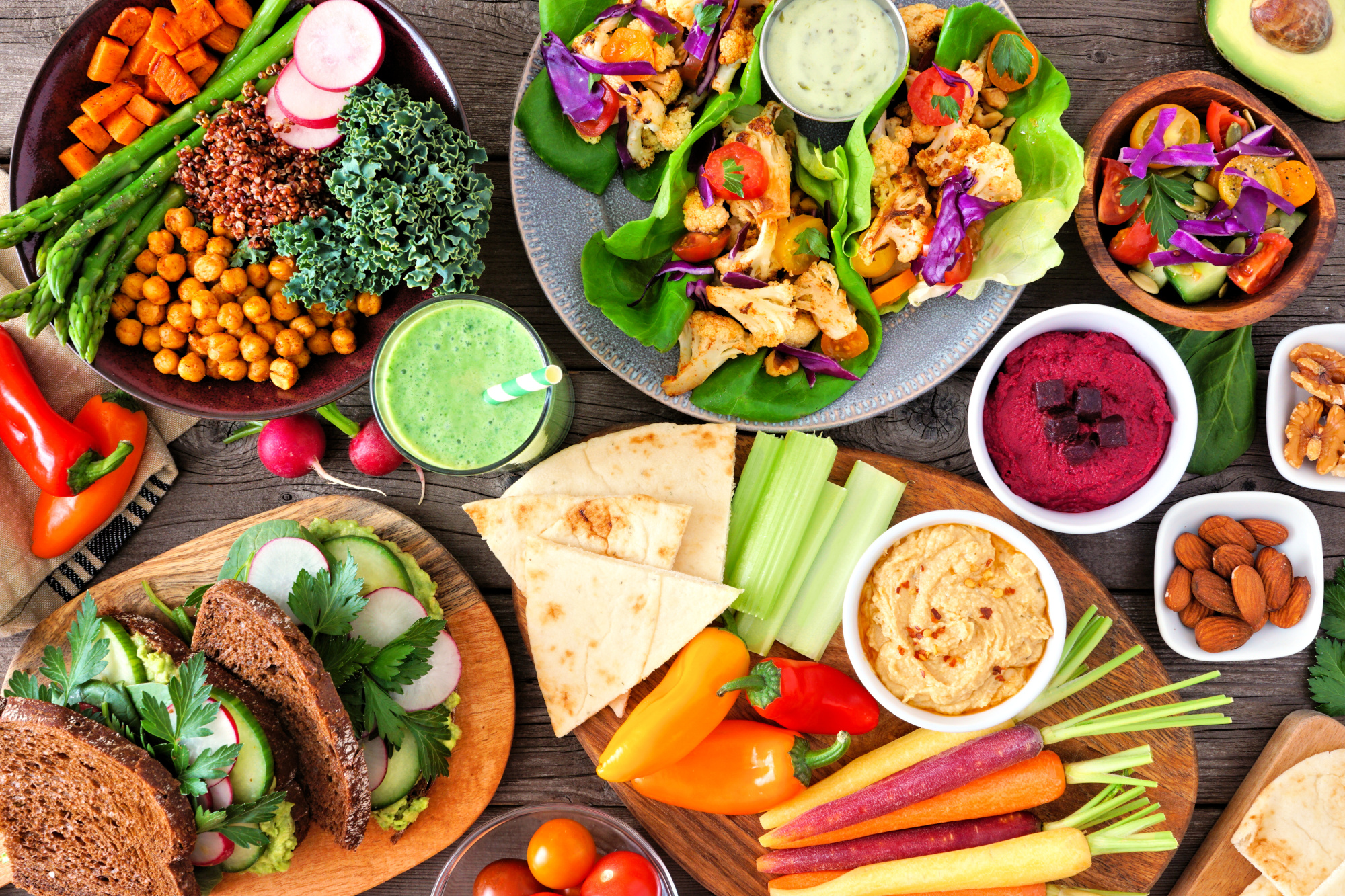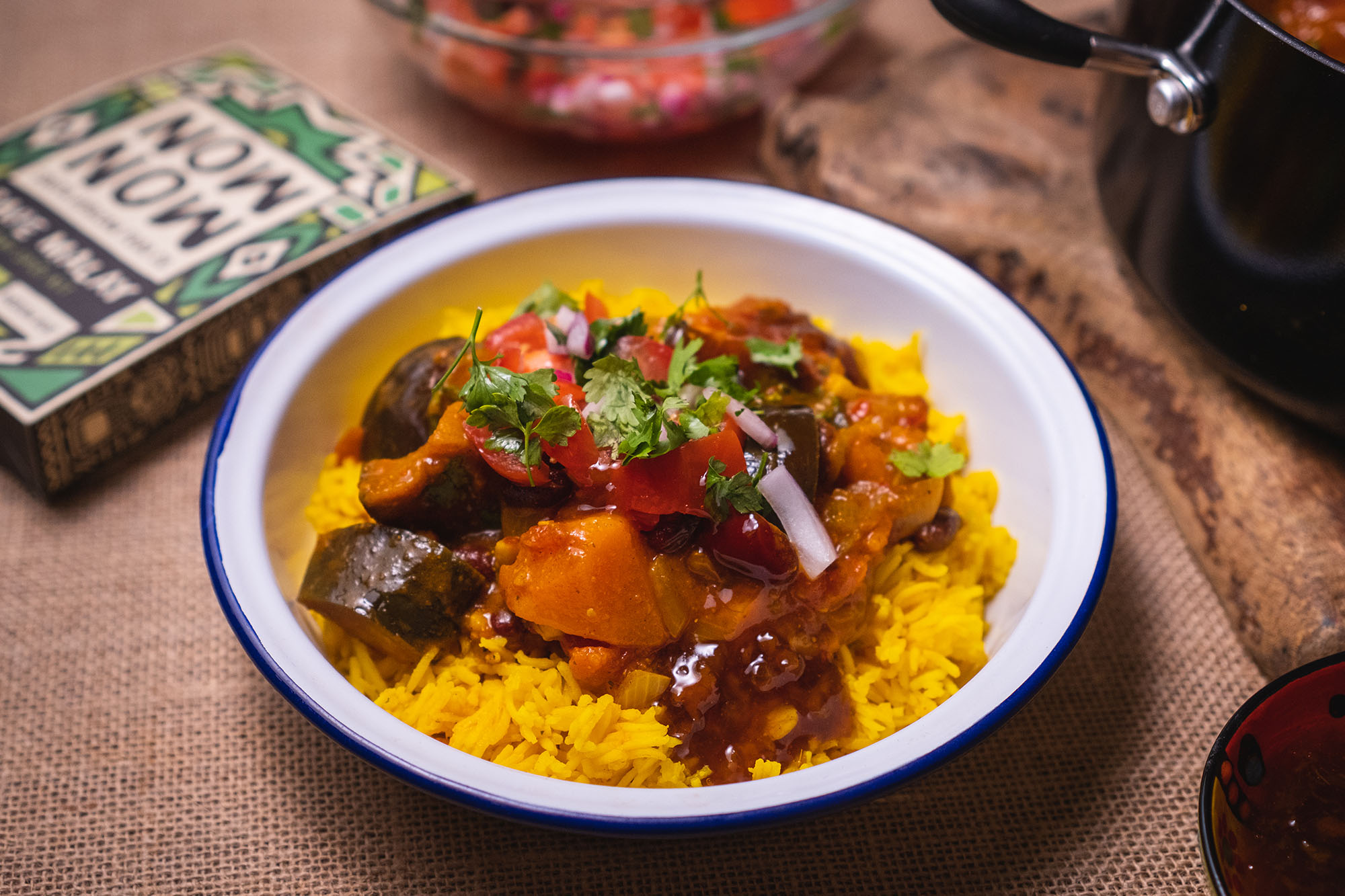Introduction
We’ve compiled the top marketing strategies for plant-based brands and created a summary checklist for busy brands. These insights are based on our market research across tens of thousands of households in Europe and the US, along with extensive interviews with more than 50 leading plant-based food brands. For deep dives into these and other topics, check out our full catalogue of articles on the ProVeg New Food Hub. But first, let’s explore your marketing checklist!

Front-of-pack checklist:
- Emphasise indulgence (flavour and taste) above all else. This is the primary consumer motivation.123 Use indulgent descriptors and provenance to best entice mainstream consumers – and avoid phrases such as ‘meat-free’ and ‘vegan’, as well as health-restrictive terms.4 (Check out our upcoming article on labelling: ‘How does vegan or plant-based labelling affect mainstream appeal?’)
- Good artwork is vital. In general, it’s recommended to use images that convey familiarity to flexitarians, since they’re responsible for over 90% of plant-based food purchases.5 A serving suggestion that shows that your plant-based alternative can be prepared and enjoyed just like the conventional product will help to signal convenience. (See how brands like Richmond, Moving Mountains, Vivera, and others do this in our white paper ‘5 Marketing fails to avoid with plant-based foods’.)
- Signal health benefits using stickers or callouts. After taste, health is the top motivator for people seeking plant-based products.6 Key features to highlight include protein content, B12, calcium, iron, vitamin D, zinc, and fibre. Highlighting low sugar, low salt, or low saturated fat content is also useful, with health-positive language performing well.7 (For more information on plant-based nutrition, check out our industry guide: ‘5 tips for brands to increase the health benefits of plant-based foods’.)
- Environmental impact is increasingly important to consumers. An ecolabel or similar environmental-impact labelling can help your brand to stand out. Use a single score that’s easy to understand – for example, ‘Ecoscore A’ or ‘carbon neutral’. We recommend using a specialist environmental-impact accreditor for this in order to earn consumer trust. (Check out our detailed guide: ‘Environmental-impact labelling: options and impacts for retailers and brands’.)
Back-of-pack and side-of-pack checklist:
- Make preparation methods clear – flexitarians are often unsure how to cook/use plant-based alternatives, which suppresses sales.8910 If possible, always provide cooking instructions that correlate with those of the conventional product. Make it look quick and easy! (Check out how brands like Dopsu and the Tofoo Co. do this in our industry guide: ‘Convenience by design: how to make plant-based products easy for consumers and attractive to flexitarians’.)
- Provide a recipe idea that appeals to flexitarians. Appeal to their desire for familiarity by putting a plant-based spin on traditional recipes. (See the article linked above for examples.)
- Educate consumers about the bioavailability of your plant-based proteins and nutrients — this can work effectively as a concise callout on side-of-pack.
- Always translate your packaging properly and completely, and make sure that the artwork and messaging resonates with the target country. Don’t just assume that your original style will resonate with consumers in a different culture, and avoid using translated ingredient stickers — these are off-putting to consumers. (Learn from the leading brands in our white paper ‘5 marketing fails to avoid with plant-based foods’.)

Influencer-marketing checklist:
- Your strategy should be to connect with plant-based influencers and offer them free products, in the hope that they will share positive reviews with their followers. Gifting several smaller influencers is likely to deliver a better ROI over the long term than paying a single big influencer for promotion.11 (Check out how brands like Heura are growing their consumer base in our white paper: ‘How to work with influencers to reach key consumers’.)
- Start by following the top vegan influencers – a lot of their followers are curious flexitarians. Watch how the influencers engage with their followers and join in the conversation.
- Connect with micro-influencers (1,000-5,000 followers). Find them by searching for posts with relevant tags. Build up a rapport by commenting positively on what they’re posting, and start tagging them in your own posts when relevant.
- If an influencer engages warmly with you in return, it’s time to send them a private message and offer them some free products. Make it clear from the start that you’re gifting them your product with no strings attached. (And if they’re not interested, move on!)
- If the influencer chooses to promote your product to their followers, and their followers respond positively, then look to deepen that relationship. You could co-create recipes or invite them to exclusive events and tastings – the more opportunities you give them to experience something incredible, the more likely they are to talk about your brand.
In-store promotions
- Offer long-term promotions when launching new plant-based products. Price is the primary motivator for the majority of consumers, so long-term discounts give consumers enough time to notice, try, and familiarise themselves with a particular plant-based alternative.12
- Run regular plant-based discount days in order to help normalise plant-based purchases for mainstream consumers. (See how retailers like Coop and Carrefour do this in our white paper: ‘5 Marketing fails to avoid with plant-based foods’.)
- In order to generate maximum revenue, which is only possible by driving sales to flexitarians, your plant-based alternatives need to achieve price parity with conventional products. (Check out which retailers are leading the way on this, and how to achieve it, in our industry guide: ‘3 ways to achieve price parity and drive sales’.)
Summary
Do you need some assistance with actioning your marketing checklist? ProVeg is here to help. Whether you’re launching a new product or would like to optimise your current marketing strategy, ProVeg has you covered. We can create a customised marketing-and-communications strategy to help you reach your goals. Drop us a line at [email protected] to get started.
References
- Smart Protein (2021): What consumers want: a survey on European consumer attitudes towards plant-based foods, with a focus on flexitarians, European Union’s Horizon 2020 research and innovation programme (No 862957). Available at https://smartproteinproject.eu/wp-content/uploads/FINAL_Pan-EU-consumer-survey_Overall-Report-.pdf Accessed 2022-04-08
- MarketingCharts (2019): Taste and Price the Top Influencers For Consumers Trying New Food & Beverage Products. Available at https://www.marketingcharts.com/industries/cpg-and-fmcg-108449 Accessed 2022-04-08
- Tresearch (2017): The sweet spot for health and taste. Available at https://www.teagasc.ie/media/website/publications/2017/16-The-sweet-spot-for-health-and-taste.pdf Accessed 2022-04-08
- Wise J. & Vennard D. (2019): It’s All in a Name: How to Boost the Sales of Plant-Based Menu Items. Available at https://www.wri.org/insights/its-all-name-how-boost-sales-plant-based-menu-items Accessed 2022-04-08
- Kantar Market Research (2019): Only 3% of UK self-define as ‘vegan’. Available at https://www.kantar.com/uki/inspiration/consumer/only-3-per-cent-of-uk-self-define-as-vegan/ Accessed 2022-04-08
- Smart Protein (2021): What consumers want: a survey on European consumer attitudes towards plant-based foods, with a focus on flexitarians, European Union’s Horizon 2020 research and innovation programme (No 862957). Available at https://smartproteinproject.eu/wp-content/uploads/FINAL_Pan-EU-consumer-survey_Overall-Report-.pdf Accessed 2022-04-08
- Wise J. & Vennard D. (2019): It’s All in a Name: How to Boost the Sales of Plant-Based Menu Items. Available at https://www.wri.org/insights/its-all-name-how-boost-sales-plant-based-menu-items Accessed 2022-04-08
- Mintel (2020) UK ready meals and ready-to-cook foods market report 2020. Cited from Eating Better (2021): Ready meals 2021 snapshot survey. Available at https://www.eating-better.org/uploads/Documents/2021/EB-ready-meals-survey-FINALJune2021.pdf Accessed 18.10.2021
- Pasi, P; Vinnari, M and Pekka, J (2015): Consumers’ perceived barriers to following a plant-based diet. British Food Journal. 117 (4). DOI: 10.1108/BFJ-09-2013-0252. Available at https://www.researchgate.net/publication/260478794_Consumers%27_perceived_barriers_to_following_a_plant-based_diet Accessed 2021-12-09
- Job, K; Kalocsay, K; King, T; Lawrence, S and Weber, J (2021): 2020 state of the industry: Australia’s plant-based meat sector. Melbourne: Food Frontier. Available at https://www.foodfrontier.org/wp-content/uploads/dlm_uploads/2021/03/Food-Frontier-2020-State-of-the-Industry.pdf Accessed 2021-12-09
- TapInfluence, cited from Baer, J (n.y.): The shocking ROI of influencer marketing. Convince and Convert. Available at https://www.convinceandconvert.com/convince-and-convert-podcast/the-shocking-roi-of-influencer-marketing/ Accessed 2021-12-21
- Smart Protein (2021): What consumers want: A survey on European consumer attitudes towards plant-based foods. Country specific insights. European Union’s Horizon 2020 research and innovation programme (No 862957). Available at https://proveg.com/what-we-do/corporate-engagement/consumer-attitudes-plant-based-food-report/ Accessed 2021-12-02



